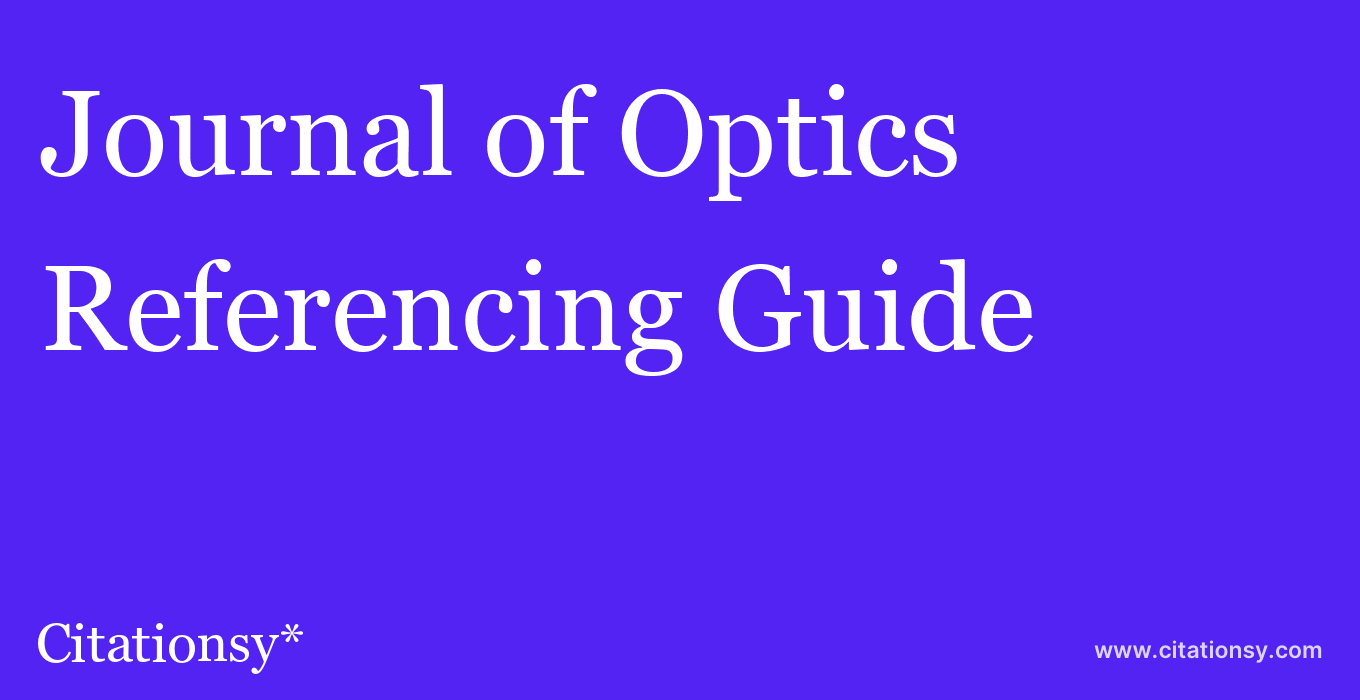Journal of Optics Referencing Guide
(updated Apr 2024)
Last updated:
How to do citations in Journal of Optics style?
This is the Citationsy guide to Journal of Optics citations, reference lists, in-text citations, and bibliographies.
Automate citations and referencing with our tool, Citationsy. It’s free to try and over 400 000 students and researchers already use it.
This is the Citationsy guide to Journal of Optics citations, reference lists, in-text citations, and bibliographies.
The complete, comprehensive guide shows you how easy citing any source can be. Referencing books, youtube videos, websites, articles, journals, podcasts, images, videos, or music in Journal of Optics.
Click here to give it a try.

How do you cite a book in the Journal of Optics referencing style? (2024 Guide)
One of the most cited mediums is of course books. Here’s how to cite a book in Journal of OpticsHere’s an example book citation in Journal of Optics using placeholders:
[1]
Last Name F N 2000 Title E F N Editor Last Nameed (City: Publisher)
Journal of Optics citation:
[1]
Angelou M 1969 I Know Why the Caged Bird Sings (New York: Random House)
Automate citations and referencing in Journal of Optics with our tool, Citationsy.
It’s free to try and over 400 000 students and researchers already use it.
Click here sign up
How to reference a journal article in the Journal of Optics citation style?
How do you cite scientific papers in Journal of Optics format?
Citing formats are used to recognize related literary pieces and to mention references used. To cite any paper in Journal of Optics, follow these easy stepsHere’s a Journal of Optics journal citation example using placeholders:
[1]
Author1 LastnameA F and Author3 LastnameA F 2000 Title Container Volume pages Used
 Sign in with Apple
Sign in with Apple account
account